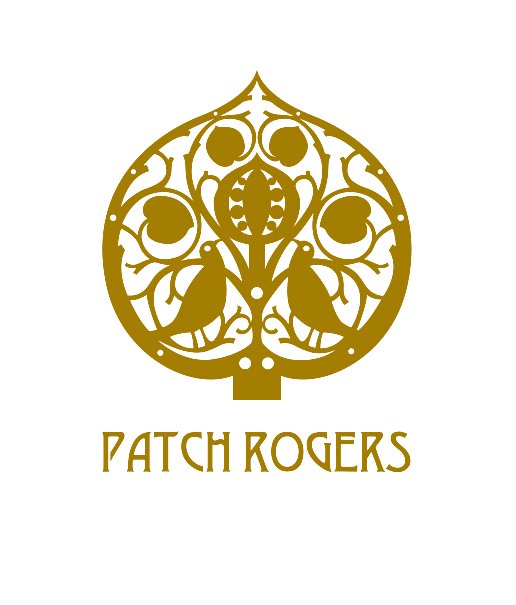CFA VOYSEY CHAIRS
CFA VOYSEY CHAIRS
CHARLES FRANCIS ANNESLEY VOYSEY 1847-1941
A pair of oak chairs with cut-out heart detail designed by CFA Voysey circa 1900
CFA Voysey was an English architect and furniture and textile designer. Voysey's early work was as a designer of wallpapers, fabrics and furnishings in a simple Arts and Crafts style, but he is renowned as the architect of several country houses.
He was one of the first people to understand and appreciate the significance of industrial design. He has been considered one of the pioneers of Modern Architecture, a notion which he rejected. His English domestic architecture draws heavily on vernacular rather than academic tradition, influenced by the ideas of Herbert Tudor Buckland (1869–1951) and Augustus Pugin (1812–1852).
The Sanderson wallpaper factory (1901) in Chiswick, which he designed, is named Voysey House in his memory.
Voysey's designs in the field of applied art included furniture, wallpapers, fabrics, carpets, tiles, metalwork, ceramics and graphic design. Sometimes he designed artefacts especially for his own buildings, and sometimes he sold designs to manufacturers for wider use.
Voysey's development as a furniture designer corresponded to his development as an architect, and by c.1895 he had evolved a definitive personal style. His furniture conformed, with a few exceptions, to this style until 1910, when he began to introduce greater elaboration, including Gothic motifs, into his designs. The simple elegance of Voysey's furniture from the period 1895–1910 was achieved by relying on the innate beauty of high quality materials, especially unpolished oak, and by eschewing complicated decoration in favour of a careful balance of the vertical and horizontal elements in a design.
The vertical elements were often emphasised by tapering the vertical supports from a square to an octagonal section and by carrying corner supports up above the functionally necessary height; the horizontal elements were often emphasised by simply moulded cornices, by circular caps on the tops of corner supports (a motif borrowed from Arthur Heygate Mackmurdo) and by long strap-hinges made of unpolished bronze.
Voysey was a distinguished designer of flat patterns for wallpapers, fabrics, carpets and tiles. It was Mackmurdo who first introduced him to the techniques of wallpaper design, and some of Voysey's early pattern designs incorporated more restrained versions of the swirling motifs beloved by Mackmurdo and the Century guild of artists. Voysey sold his first wallpaper design in 1883; by the late 1880s his reputation as a wallpaper designer was established at home and abroad, and he was still selling pattern designs in 1930. His career as a pattern designer was thus longer and more prolific than his career as an architect. But it was also complementary to his architectural career, because selling patterns supplemented his income in the lean years of his architectural practice, before circa 1895 and after circa 1910.
Many of Voysey's pattern designs rely for their effect on rhythmically contrasted shapes consisting of areas of flat, clear colour, usually bounded by dark or pale outlines. This is in the tradition of oriental design praised by Victorian reformers of design, such as Owen Jones and Matthew Digby Wyatt. In Voysey’s work stylised natural forms, especially plants and birds, often represent the positive shapes, and areas of background form the contrasting negative shapes. This skilful juxtaposition can also be seen in his handling of the solids and voids in his designs for two-dimensional metalwork, such as ventilator grilles and hinges. Some of Voysey's pattern designs after c. 1900 consist of motifs placed in comparative isolation against a light ground. The use of scale is arbitrary, giving an effect of naive charm reminiscent of medieval illuminations and tapestries. The later designs are generally smaller and more delicately coloured than the designs of the 1880s and 1890s.
At the suggestion of his friend A. H. Mackmurdo, Voysey began designing wallpapers in 1883 under contract for Jeffrey & Co while waiting for architectural commissions to come in. He joined the Art-Workers' Guild in 1884, and displayed both printed textiles and wallpapers at the inaugural Arts and Crafts Exhibition Society show at the New Gallery in 1888. In 1893 he began designing wallpapers for Essex & Co., for whom he executed several hundred patterns.
Distinct stages can be identified in Voysey's wallpaper and textile designs. His earliest works, through the late 1880s, have historically-influenced traditional repeats. By the mid-1890s, he was creating his most characteristic and original designs, flowing patterns in pastel colour ways with flattened silhouettes of birds, florals, and hearts. Designs were used for both wallpaper and textiles, which were often executed as wool double cloths for furnishing.
Typical patterns of this period include The Saladin wallpaper, 1897 and The Owl jacquard- woven woollen textile, 1898. From 1910 onwards, his patterns became more narrative, with isolated motifs, and were often meant for the nursery. The Alice in Wonderland furnishing fabric, c.1920, is typical of this phase. His last recorded wallpaper commission was dated 1930.
Courtesy of Wikipedia


